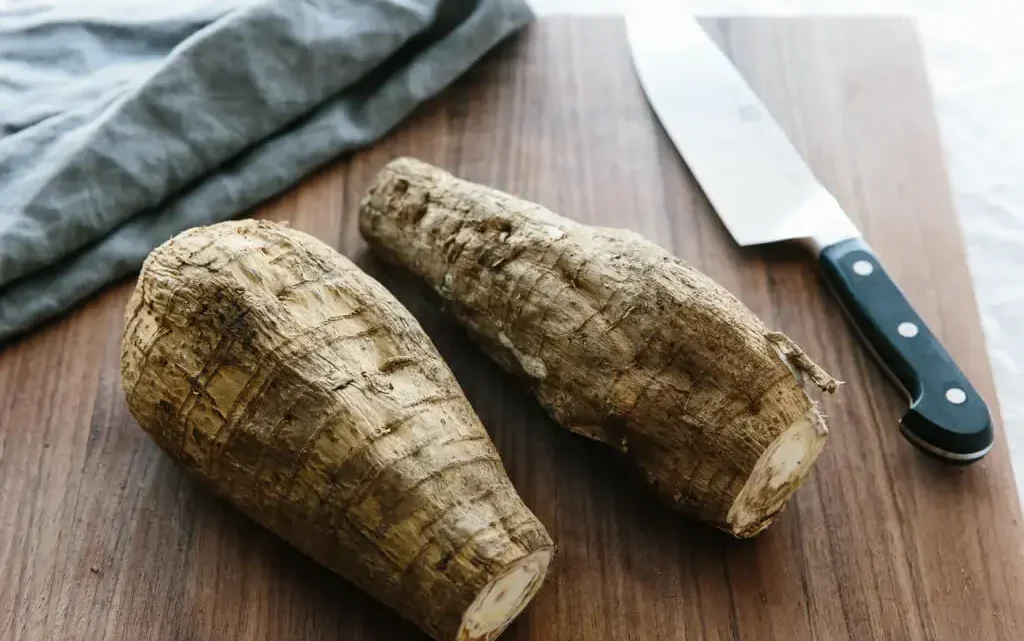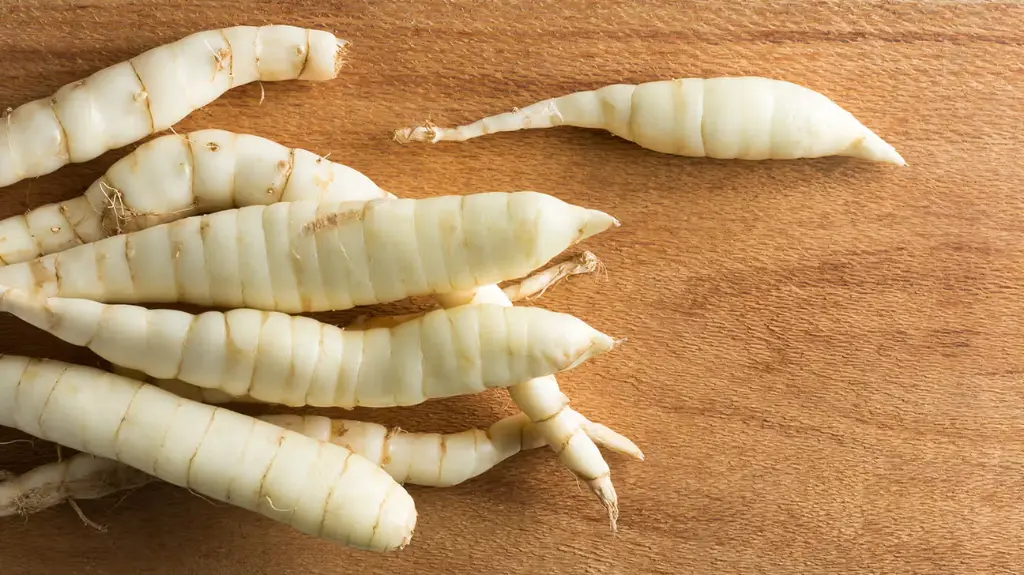
Arrowroot (arrowroot – starch flour) is a starch made from arrowroot, a tropical plant from South America. Arrowroot is also grown on the Fiji Islands and Brazil. The tubers of the plant are used as raw materials for the production of arrowroot. In this case, dried arrowroot rhizomes are used, which are ground into flour.
In addition to arrowroot, tropical cassava roots and banana pulp are used to make arrowroot , respectively Brazilian and Guianan arrowroot.
In tropical, subtropical and temperate climate zones, arrowroot is grown as a houseplant. It has fairly large green leaves and small white flowers.
Using arrowroot
The properties of arrowroot have been known to people for more than 7,000 years. It was used by American Indians to nurse sick and exhausted children and the elderly.
Storage
After purchasing arrowroot in a store, you should pour it into an airtight, opaque container and indicate the date of purchase on it. This is due to the fact that arrowroot retains its properties only for two months after opening the package.
Useful properties of arrowroot
Composition and presence of nutrients
Raw arrowroot contains (per 100 g):
- Calories – 65 Kcal
- Squirrels – 4.24G
- Fats – 0.2G
- Carbohydrates – 13.39G
- Water – 80.75G
- Ash -1.42G

| Vitamins | mg | Minerals | mg |
| Vitamin C | 1.9 | Potassium, K | 454 |
| Vitamin B3 | 1,693 | Phosphorus, P | 98 |
| Vitamin B1 | 0.143 | Sodium, Na | 26 |
| Vitamin B5 | 0.292 | Magnesium, Mg | 25 |
| Vitamin B6 | 0.266 | Calcium, Ca | 6 |
This product contains absolutely no fats, so it is almost completely absorbed by the human body. It is classified as a dietary product. Arrowroot is also used by people on a raw food diet, because… it does not require heat treatment.
Arrowroot has a general strengthening effect and normalizes metabolism. Due to its high level of fiber and starch substances, it is used in the treatment of anorexia and intestinal anemia. A hot drink with the addition of arrowroot perfectly warms and prevents colds. The presence of biologically active substances helps thin the blood and prevents the formation of blood clots in the vessels.
Arrowroot in cooking
Due to the absence of any taste, this product is widely used in American, Mexican and Latin American cuisines for preparing a variety of sauces, jelly desserts and baked goods. When cooking with arrowroot, it requires a relatively low temperature to completely thicken, so it goes well in raw egg-based sauces and custards.
Also, dishes do not change their color, as, for example, when using flour or other types of starch. Depending on the required thickness of the final dish, arrowroot should be added 1 tsp, 1.5 tsp, 1 tbsp. for one tablespoon of cold water. Afterwards, mix thoroughly and pour the mixture into 200 ml of hot liquid. The result will be a liquid, medium or thick consistency, respectively. It should also be taken into account that when arrowroot is heated for more than 10 minutes, it loses all its properties and the liquid returns to its original state.
Dangerous properties of arrowroot
In most cases, arrowroot does not cause any allergic reactions and has no contraindications.
However, it is not recommended for use by people with bleeding disorders, during the postoperative period, and by people with bleeding gastrointestinal ulcers .

Arrowroot powder is generally considered safe and non-toxic for consumption. It is a starch obtained from the rhizomes of the tropical plant Maranta arundinacea and is often used as a thickening agent in cooking, especially for people with dietary restrictions such as gluten intolerance.
However, as with any food product, it’s important to use it in moderation and ensure it comes from a reputable source to avoid contamination. If you have any specific allergies or medical conditions, it’s always best to consult with a healthcare professional before adding new foods to your diet.



